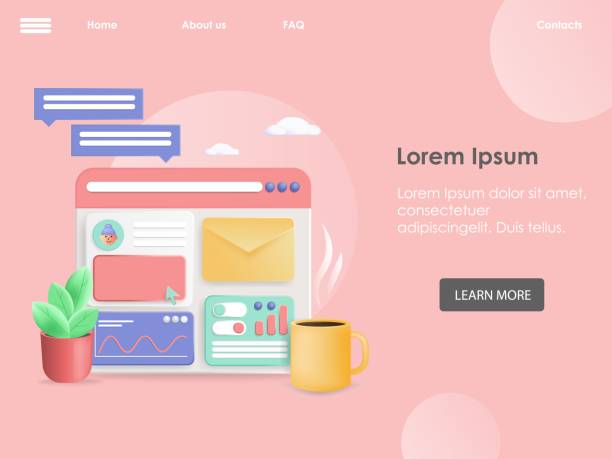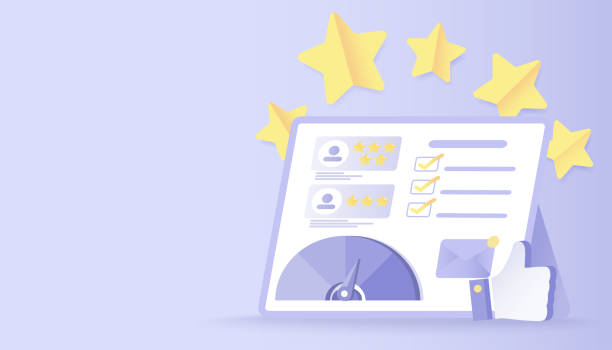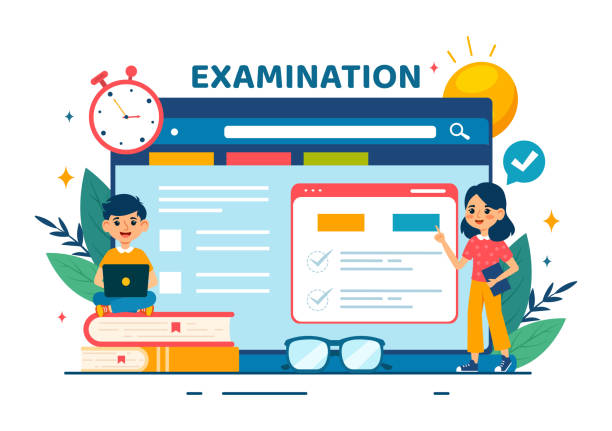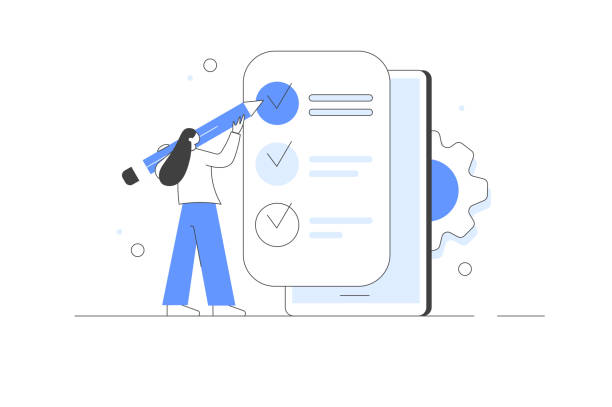Introduction to the Importance of SEO in Website Design

In today’s digital world, merely having a website is not enough; your website must be accessible and visible to your target audience.
This is where the role of #SEO, or Search Engine Optimization, becomes prominent.
SEO-optimized website design means building a website that is designed from the outset with search engine ranking factors like Google, Bing, and Yahoo in mind.
This approach ensures that your website is not only visually appealing but also has an optimized structure that helps search engine crawlers easily understand and index your content.
In fact, SEO is no longer a luxury option, but a necessity for any business that wants to succeed in the online space.
Ignoring this can lead to your website going unnoticed among a multitude of competitors, even if you offer the best products or services.
In this chapter, we will educationally and descriptively explain the importance of SEO in the website design process.
When you decide to design a website, you should know that it’s not just about visual aesthetics; it’s about technical architecture, loading speed, and content quality.
A website designed with SEO principles from the ground up will have a significant competitive advantage.
This approach ensures that your site appears higher in search results and attracts more organic traffic.
Organic traffic is traffic that users reach your website through search engines and typically has higher quality because users are looking for content relevant to their needs.
Therefore, investing in search engine optimization from the outset will yield an excellent long-term return on investment and provide a solid foundation for your online growth and development.
This introduction shows why every website needs an SEO-centric framework.
Losing potential customers due to an unprofessional website? Rasavab is your answer! With our specialized corporate website design services:
✅ Enhance your business’s credibility and standing
✅ Experience attracting more targeted customers
⚡ Act now to receive a free consultation!
Technical Principles in SEO-Oriented Website Design

An SEO-optimized website design goes beyond a beautiful appearance; it also requires a strong technical infrastructure.
In this section, we will professionally and analytically examine the most important technical principles that play a vital role in the process of optimizing a website for search engines.
The first and perhaps most important principle is site loading speed.
Search engines, especially Google, consider site speed as an important ranking factor.
Slow websites provide a poor user experience and have high bounce rates.
To improve speed, one can use image compression, code optimization (HTML, CSS, JavaScript), CDN (Content Delivery Network) usage, and choosing robust hosting.
The second principle is responsiveness or mobile compatibility.
Given the increasing number of mobile users, responsive website design that displays well across all devices (mobile, tablet, desktop) is of paramount importance.
Google uses a Mobile-first Indexing approach, meaning it prioritizes the mobile version of your site for indexing and ranking.
This means if your site is not optimized for mobile, you may not achieve a good rank in search results.
URL structure is also another important principle.
Short, descriptive URLs containing relevant keywords help search engines and users understand the page’s content.
Finally, the correct implementation of Robots.txt and Sitemap XML files are technical necessities.
Robots.txt tells search engines which parts of the site to crawl and which not to, while Sitemap XML provides a roadmap for search engines to discover and index all important pages of your site.
Detailed analysis of these factors forms the foundation of successful website optimization.
Keyword Research and its Place in SEO

Keyword research is the backbone of any successful SEO strategy and a key factor in SEO-optimized website design.
Without identifying appropriate keywords, all your optimization efforts may be in vain.
In this section, we will provide specialized guidance on the keyword research process and its role in achieving SEO goals.
The main objective of this process is to find the words that your target audience enters into search engines to find the products, services, or information you offer.
These words can range from general and highly competitive keywords to longer (Long-tail Keywords) and more specific ones.
To begin, you should prepare a list of topics related to your business.
Then, use keyword research tools such as Google Keyword Planner, Ahrefs, Semrush, or KWFinder to discover search volume, competition level, and related keywords.
Paying attention to user search intent is crucial; that is, you must understand what the user is actually looking for when searching a specific keyword.
Are they looking for information? Do they intend to buy? Or do they want to go to a specific website? Your content should align with this intent.
After collecting and analyzing keywords, you should naturally incorporate them into your site’s content, page titles, meta descriptions, and H1 to H6 tags.
Overuse of keywords (Keyword Stuffing) not only doesn’t help your SEO but can also lead to penalties from search engines.
Below is a table of keyword types and their applications in SEO strategy:
| Type of Keyword | Explanation | Example |
|---|---|---|
| Short-tail Keywords | General phrases with high search volume and high competition. | “SEO”, “Website Design” |
| Long-tail Keywords | Longer and more specific phrases with less search volume but high targeting. | “Best method for SEO-optimized website design for small business” |
| Local Keywords | Related to a specific geographical location. | “SEO-optimized website design in Tehran” |
Optimized Content Production and its Role in On-Page SEO

Content is king; this phrase holds even more importance in the world of SEO.
In the process of SEO-optimized website design, producing high-quality and optimized content is not only attractive to users but also helps search engines understand the value and relevance of your website.
In this section, we will educationally and descriptively discuss the importance of content production and how to optimize it for On-Page SEO.
Your content must be unique, valuable, comprehensive, and up-to-date.
Copying content from other sites not only harms your SEO but can also lead to penalties from search engines.
To optimize content, you must first naturally incorporate your target keywords into the text.
This includes using keywords in the article title, introduction, main sections, and conclusion.
Additionally, using synonyms and LSI (Latent Semantic Indexing) keywords helps search engines better understand the overall context of your content.
Content structure is also very important.
Using appropriate headings (H1, H2, H3), short paragraphs, bulleted lists, and images and videos helps increase content readability and attractiveness.
Images must have descriptive Alt tags so that search engines can understand their content.
Furthermore, internal linking between related pages of the site helps users with navigation and distributes SEO power among different sections of the site.
Finally, regularly updating content and adding new information sends a positive signal to search engines that your site is active and dynamic.
A search-optimized site always prioritizes valuable content production to maintain its position in online competition.
Is your e-commerce site ready to attract maximum customers and increase sales? Rasavab transforms your online business with modern and efficient e-commerce website designs.
✅ Increased speed and improved SEO
✅ Excellent user experience on mobile and desktop⚡ Get a free e-commerce website design consultation from Rasavab!
Link Building and Domain Authority in Off-Page SEO

Alongside on-page SEO and SEO-optimized website design, off-page SEO plays a vital role in increasing your site’s authority and ranking.
Off-page SEO primarily involves activities outside your website, the most important of which is link building.
In this section, we will analytically and instructively examine the importance of link building and how to establish domain authority.
Links act as “votes of confidence” from other websites to your site.
The more high-quality and relevant links pointing to your site, the more credible and trustworthy search engines consider your site to be.
The quality of links is more important than their quantity.
Getting links from high-authority sites relevant to your field of activity is far more valuable than low-quality or spammy links.
There are various ways to build links: producing high-quality and shareable content, content marketing, digital public relations, broken link building, and collaborating with influencers.
Also, you should be careful to avoid black hat SEO techniques such as buying links or participating in link farms, as these methods can lead to severe penalties from Google.
In addition to links, factors such as brand mentions in the online space, social media activity, and participation in specialized forums can also help increase your domain authority.
The ultimate goal of off-page SEO is to build a healthy and diverse link profile that shows search engines your website is a credible and reliable resource in its field.
Remember that website optimization for search engines is a continuous process, and link building is one of its most important components.
The Role of User Experience (UX) in SEO-Optimized Website Design

Today, User Experience (UX) is not just a competitive advantage, but has become one of the most important ranking factors in SEO.
In fact, an SEO-optimized website design would be incomplete without considering UX.
In this section, we will professionally and in the form of news on the latest approaches, examine how UX impacts SEO.
Google and other search engines are increasingly emphasizing factors such as Bounce Rate, Dwell Time, and Click-Through Rate (CTR) in search results.
These factors are directly related to the quality of the user experience.
If users quickly leave your site or spend little time on it, this sends a negative signal to search engines that your content is not valuable or your site does not provide a good experience.
A website with excellent UX has easy navigation, attractive visual design, and understandable and highly accessible content.
These features lead users to spend more time on your site, visit more pages, and are more likely to convert into customers.
For example, your site’s visual design should be attractive and consistent with your brand identity.
Colors, fonts, and images should be chosen to enhance readability and appeal.
The user journey should be clear and unambiguous from the start, so users can easily find what they are looking for.
Contact forms, call-to-action (CTA) buttons, and the purchasing process should be simple and straightforward.
Any friction or obstacle in the user’s path can lead them to leave the site.
The latest Google news and updates, such as Core Web Vitals, also indicate an increased focus on UX metrics like loading speed, interactivity, and visual stability.
This means every aspect of design that affects user experience will now directly impact your SEO ranking.
Mobile Optimization and the Future of SEO

Have you ever wondered why there’s so much emphasis on mobile? Has your smartphone become one of the most important SEO tools? Absolutely yes! In the current era, mobile optimization is not just a recommendation, but a necessity for every successful SEO-optimized website design.
In this section, with an entertaining approach and in the form of thought-provoking content, we delve into the depth of mobile-first importance in SEO and its impact on the future of the web.
With the increasing use of smartphones to access the internet, Google has adopted a Mobile-First Indexing policy since 2018.
This means Google primarily considers the mobile version of your site for indexing and ranking.
If your mobile version is not optimized, you may drop in search results, even if your desktop version is excellent.
What makes a mobile-friendly site? High loading speed, responsive design that adapts content well to screen size, large and clickable touch buttons, short and user-friendly forms, and readable content without the need for zooming are among the most important features.
Does your site pay attention to these points? Do users who visit your site with a mobile phone have a pleasant user experience? Neglecting these issues not only harms your SEO but also frustrates users and drives them away from your site.
The future of SEO is closely tied to mobile user experience and artificial intelligence.
Search engines are learning to better understand user intent and provide the most accurate results.
This means that a mobile-optimized website with valuable and structured content will be a leader in the competition.
Below is a table of key differences between responsive design and separate mobile design:
| Feature | Responsive Design | Separate Mobile Site |
|---|---|---|
| URL Address | One URL for all devices | Two URLs (e.g., example.com and m.example.com) |
| Maintenance | Easier (one codebase) | More difficult (two separate codebases) |
| User Experience | Integrated experience across different devices | May have a different experience for each device |
| SEO Impact | Recommended by Google, more SEO-friendly | More complexity in SEO (requires Canonical tags and Redirects) |
SEO Performance Analysis and Monitoring Tools

To ensure the success of an SEO-optimized website design, merely implementing principles is not enough; continuous monitoring and performance analysis are required.
In this section, we will analytically and instructively introduce and examine the most important tools that help you measure your website’s SEO performance, identify problems, and optimize your strategies.
Google Search Console (GSC) is a free and essential tool from Google that provides vital information about how Google interacts with your site.
This tool helps you identify crawl errors, indexing issues, search performance (keywords, clicks, impressions), and security problems.
Google Analytics is another Google tool used for website traffic analysis.
With it, you can obtain information such as the number of visitors, pages viewed, time spent on site, bounce rate, and traffic sources.
Combining GSC and Google Analytics data gives you a comprehensive view of SEO performance and user experience.
In addition to these free tools, there are also powerful paid tools like Ahrefs, Semrush, and Moz, which offer more advanced capabilities such as competitor analysis, deeper keyword research, backlink monitoring, and rank tracking.
Using these tools allows you to identify the strengths and weaknesses of your SEO strategy and make data-driven decisions.
Remember that SEO is an ongoing process, and regular monitoring and analysis are key to the long-term success of website optimization for search engines.
By continuously analyzing data, you can monitor changes in Google’s algorithms and adjust your strategy accordingly.
Are you tired of losing business opportunities due to not having a professional corporate website?
Rasavab, with its professional corporate website design, helps you:
✅ Build a powerful and reliable brand image
✅ Convert website visitors into loyal customers
⚡ Get a free consultation now!
The Future of SEO and Upcoming Challenges

The world of SEO is constantly changing, and what is effective for SEO-optimized website design today may change tomorrow.
In this section, we will professionally and in a news-like format examine future SEO trends and the challenges that SEO specialists and website owners should prepare for.
One of the most important upcoming trends is the increasing importance of Voice Search.
With the proliferation of voice assistants like Siri, Google Assistant, and Alexa, users are increasingly using voice commands for searching.
This type of search is typically longer and more conversational and requires content optimization to answer direct questions.
Artificial intelligence (AI) also plays an increasing role in SEO.
Google’s algorithms like RankBrain, BERT, and MUM, using AI, have gained the ability to better understand natural language and the intent behind searches.
This means that producing very high-quality and comprehensive content that deeply addresses user needs becomes more important.
Furthermore, blockchain technology and Web 3.0 may also impact how content is indexed and ranked in the future, although they are still in early stages.
Future challenges include increasing competition, the need for continuous updating of SEO knowledge, and adapting to rapid algorithm changes.
To succeed in the future, websites must focus on providing real value to the user, continuously improving user experience, and producing exceptionally high-quality content.
This approach ensures that even with algorithmic changes, your site remains relevant and visible.
Conclusion and Final Tips for Sustainable SEO Success

Throughout this article, we explored various aspects of SEO-optimized website design, covering everything from the importance of technical principles to the role of content, link building, user experience, and mobile optimization.
In this final section, we will provide a descriptive and educational summary, reviewing key tips for achieving sustainable SEO success.
Remember that SEO is not a one-time process, but a continuous journey of optimization and improvement.
The first step always begins with keyword research and understanding user intent.
This understanding is the foundation for producing valuable and relevant content.
Secondly, the technical optimization of your website, from loading speed to URL structure and crawlability, should be a priority.
A strong technical foundation enables your excellent content to be seen.
Thirdly, producing high-quality and unique content that truly addresses user needs plays an unparalleled role in attracting and retaining an audience and increasing your site’s credibility.
Fourthly, natural and targeted link building from authoritative sites enhances your domain authority and shows search engines that your site is a reliable resource.
Fifthly, never overlook an excellent user experience (UX).
Your site should be enjoyable and easy for visitors to use, especially on mobile devices.
Finally, continuous performance monitoring with tools like Google Search Console and Google Analytics helps you stay informed of changes and dynamically adjust your strategy.
By adhering to these principles and committing to continuous improvement, you can ensure that your website will always remain at the top of search results and help achieve your business goals.
Frequently Asked Questions
| Question | Answer |
|---|---|
| What does SEO-optimized website design mean? | Designing a website that, in addition to an attractive appearance, is technically and content-wise optimized to achieve a higher ranking in search engine results. |
| Why is SEO-optimized website design important? | It increases organic traffic from search engines, improves business visibility, attracts more customers, and ultimately boosts sales. |
| What are the key elements of SEO-optimized website design? | Mobile optimization, high loading speed, high-quality and relevant content, proper use of keywords, suitable URL structure, and use of title and meta tags. |
| What role does content play in website SEO? | Unique, valuable, informative content with target keywords plays a vital role in attracting users and achieving better rankings in search results. |
| What is Mobile-First Indexing? | A Google approach where the mobile version of a website is prioritized for indexing and ranking. Therefore, website responsiveness for mobile is essential. |
| How can website loading speed be improved? | Compressing images, using caching, optimizing CSS and JavaScript codes, using strong hosting, and enabling Gzip compression. |
| What is the importance of keywords in SEO? | Keywords help search engines understand the topic of your page and link it to relevant user searches. |
| What role do Title Tag and Meta Description play? | The Title Tag is the most important element in on-page SEO, and the Meta Description is a summary of the page’s content that encourages users to click. Both are displayed in search results. |
| How does Internal Linking help SEO? | It helps search engines discover and index different pages of the site and distributes page value across different sections of the site. It also improves user experience. |
| What is the use of Sitemap in SEO? | An XML file that provides a list of all important pages of the site to search engines to facilitate site crawling and indexing. |
And other services of Rasavab Advertising Agency in the field of advertising
Smart Marketplace: Revolutionize SEO ranking with Google Ads management.
Smart UI/UX: Designed for businesses seeking to increase website traffic through precise audience targeting.
Smart Data Analysis: A dedicated service for growth in customer acquisition based on attractive user interface design.
Smart Advertising Campaign: Designed for businesses looking to manage campaigns through attractive user interface design.
Smart Direct Marketing: Designed for businesses seeking digital branding through custom programming.
And over hundreds of other services in the field of internet advertising, advertising consulting, and organizational solutions
Internet Advertising | Advertising Strategy | Advertorials
Resources
Comprehensive Guide to SEO and Website Design
Website Speed Optimization for SEO
SEO-Optimized and Effective Content Production
Keyword Research Tools
? Are you ready to transform your business in the digital world? Rasavab Afarin Digital Marketing Agency, with its expertise in custom website design, targeted SEO, and innovative digital marketing strategies, will be your guide on the path to online success.
📍 Tehran, Mirdamad Street, next to Bank Markazi, Southern Kazeroun Alley, Ramin Alley No. 6



